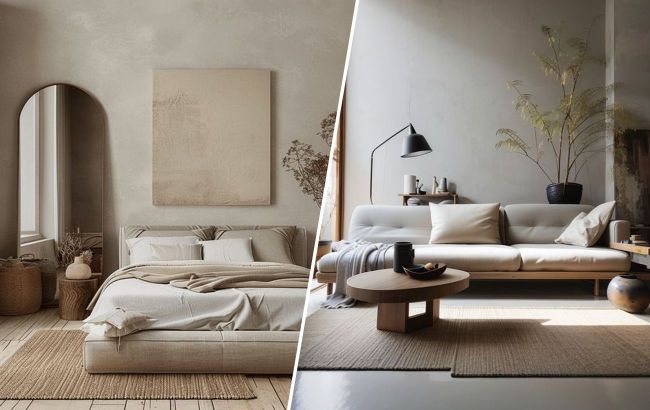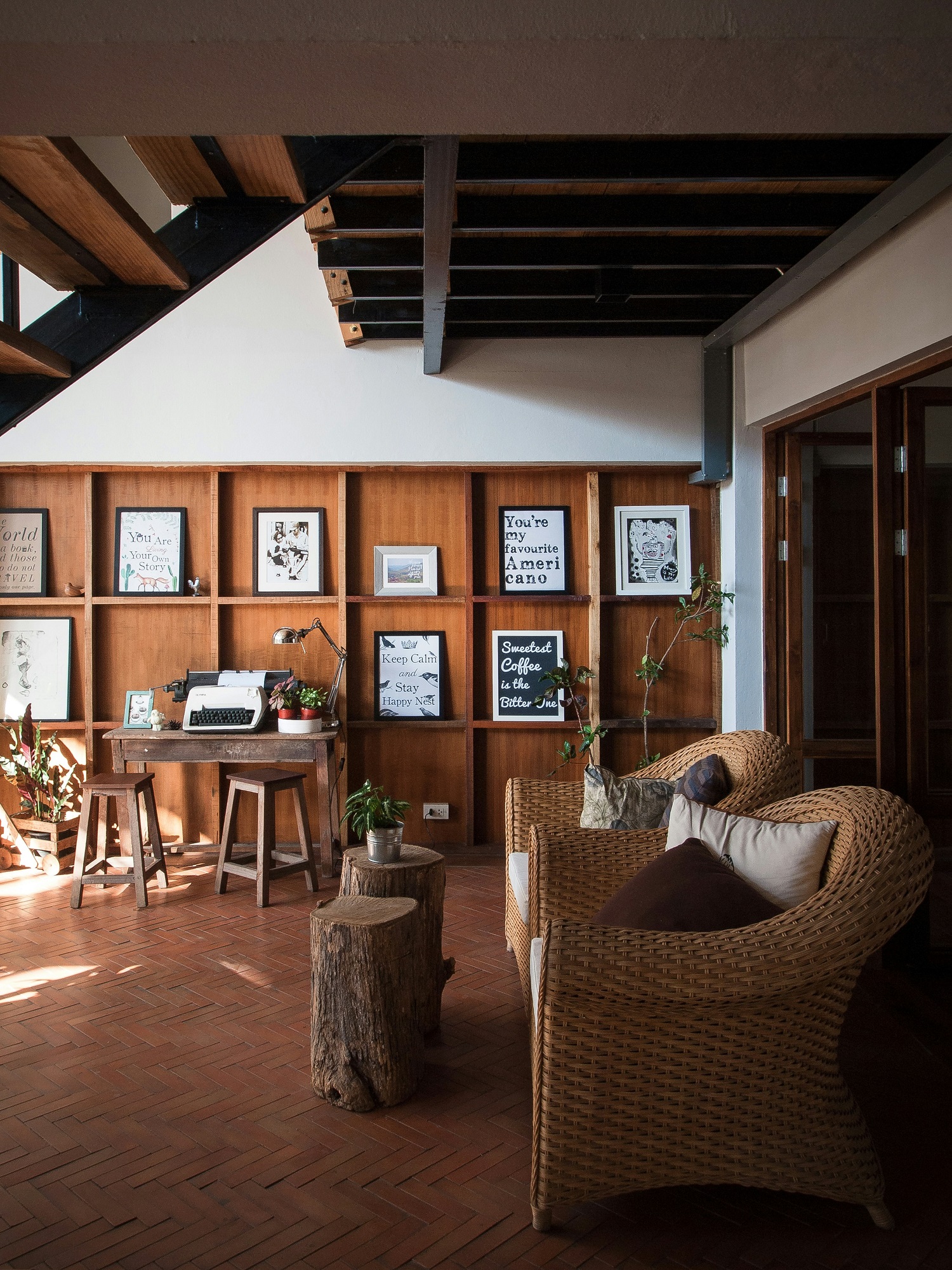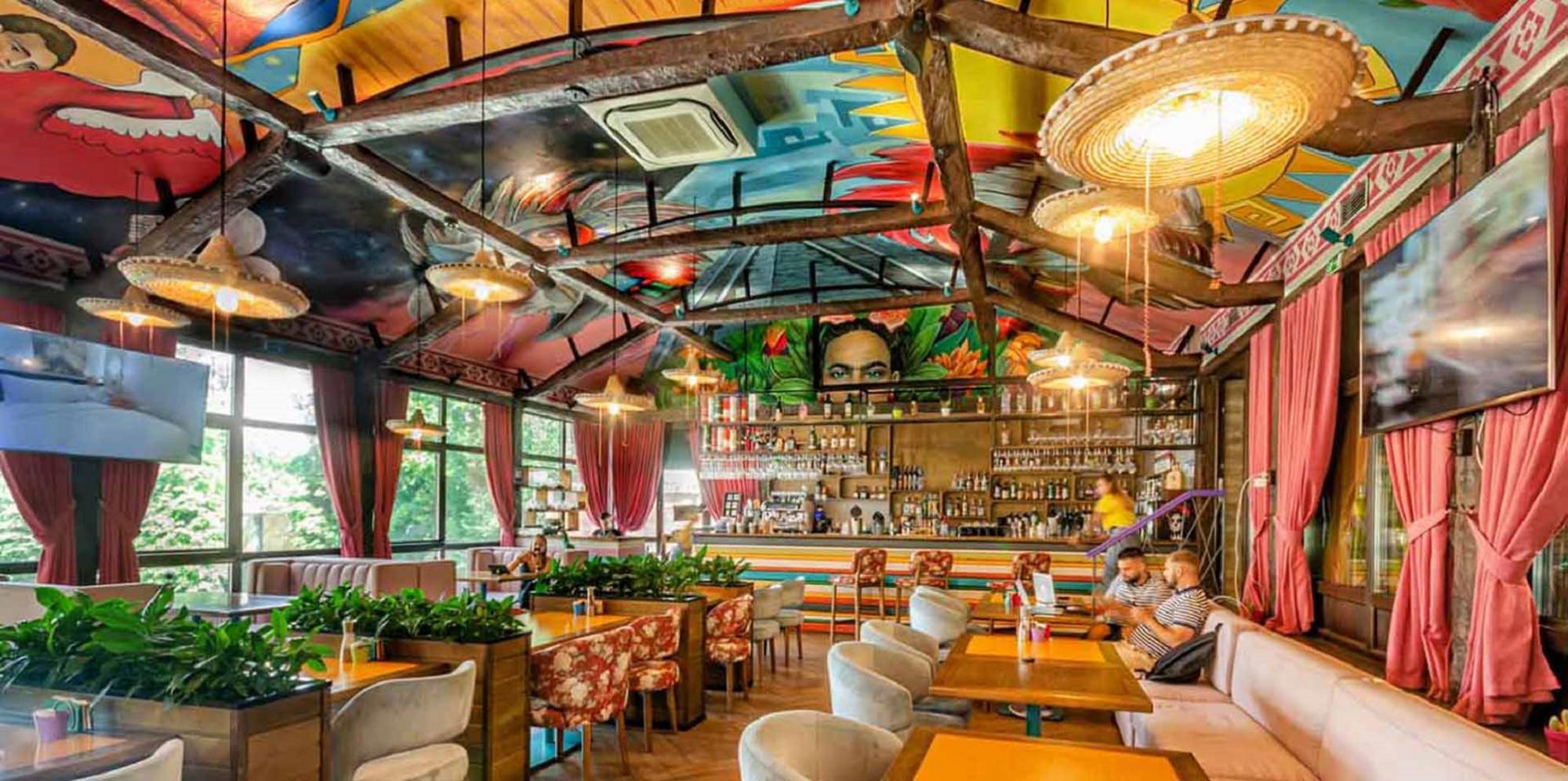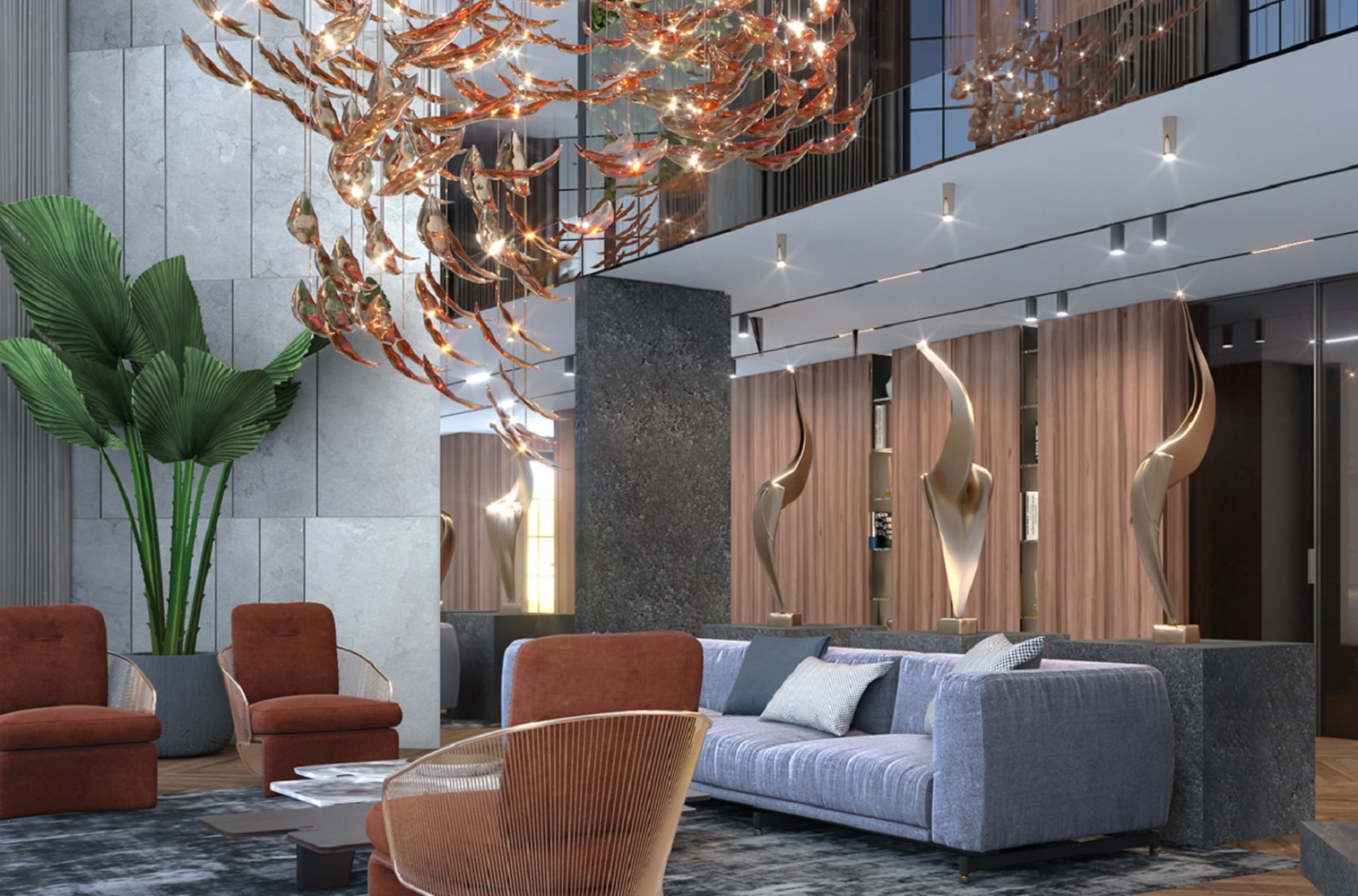Aesthetics of imperfection: Why wabi-sabi makes a space more enriching
 Ukrainians are actively experimenting with interior designs (collage: RBC-Ukraine)
Ukrainians are actively experimenting with interior designs (collage: RBC-Ukraine)
Today, the aesthetics of imperfection are gaining popularity in Ukraine and around the world. The use of organic materials, natural forms, and a rejection of perfection in home and apartment interiors helps create environments where we feel comfortable and free from pressure. But why is this the case?
RBC-Ukraine spoke with Vadym Ziuziuk, an interior designer and architect, and founder of Znak Design, about the aesthetics of imperfection, its benefits, and examples of its application.
Why the aesthetics of imperfection are becoming popular
The aesthetics of imperfection in interior design are often considered in the context of wabi-sabi. This Japanese concept celebrates the beauty of simplicity, imperfection, transience, and incompleteness. These are key traditional aesthetic principles in Japan that have recently begun to fascinate Western countries. In interior design, incorporating wabi-sabi means creating organic, authentic, and vibrant spaces.
A full embodiment of wabi-sabi involves a very specific interior style, entirely built on natural materials, natural colors, and minimalist decoration. However, the aesthetics of imperfection can be viewed in a broader context and combined with other trends and styles, including maximalism.
Ten years ago, everyone admired classic European minimalism. Interiors were mostly ideal and "sterile" – with perfect material finishes, no rough edges on wood, or imperfections in furniture.
Trends change cyclically, and over time, people desired something more vibrant, rich, and cozy. The rejection of perfection is becoming a widespread phenomenon, evident beyond interior design. For instance, there is growing fatigue from perfect images and stories on social media, and brand creatives are starting to appear more realistic.
These trends bring natural elements into interiors alongside bold and bright accents typical of maximalism.
The principle of aesthetic imperfection also fits well with the concept of sustainability and ethical consumption. For example, creating standardized furniture with deep processing involves a lot of waste. By avoiding this, materials can be used more efficiently, resulting in less waste.
 Example of wabi-sabi design (photo: Unsplash)
Example of wabi-sabi design (photo: Unsplash)
Natural elements: why do we find them appealing in the aesthetics of imperfection?
Numerous global studies highlight the positive impact of natural materials in interior spaces. Designs based on natural elements are referred to as biophilic.
For instance, the Human Spaces study on "The Global Impact of Biophilic Design in the Workplace" found that employee productivity increased by 15% in spaces incorporating biophilic design compared to those in purely artificial environments.
"This suggests that naturalistic visual elements provide rich sensory information similar to what we encounter in our natural surroundings. In such environments, we generally experience less stress and anxiety, and feel more relaxed and engaged," explains Ziuziuk.
According to the architect, this is quite logical as the human psyche evolved in a natural environment. Human spaces, prior to the mass construction and production of decorative and furniture materials, were closely related to this environment.
Natural elements lack the uniform shapes, sharp edges, and straight lines typical of human-made products. Instead, they are highly varied, often asymmetrical, with curved edges, high contrast, and unique textures.
For example, wood in designs with "imperfection" is often left in its natural state, with bark, cracks, and resin intact.
"Such elements have a profound impact on the surroundings: you understand that the wood is centuries old, it has grown and seen much, and it reminds us of how fleeting and beautiful our own lives are (here's the wabi-sabi vibe)," explains Vadym.
While it’s difficult to imagine a completely natural modern interior, a few elements can be enough to achieve a positive impact. Even a simple grey interior paired with an untreated wooden table can form a complete composition.
"In my opinion, the beauty of imperfect natural elements beautifully highlights the surrounding perfection, which becomes more refined and thoughtful, gaining value. These contrasts support each other and enrich the space," says the designer.
The natural atmosphere can also be maintained with items that mimic non-linear, organic forms and patterns, even if the materials themselves do not possess the texture of living nature. Natural colors in such interiors are used to their fullest extent, supporting the overall vibe, but bright accents are not excluded.
 Restaurant in Kyiv (photo: Znak Design)
Restaurant in Kyiv (photo: Znak Design)
Imperfection doesn’t mean chaos
When incorporating the aesthetics of imperfection into an interior, neither the composition nor the overall concept should suffer. Furniture made from untreated wood or a wall with textured stone should be accents. If these elements are included haphazardly or in excess, the interior may become a jumble of different volumes and shapes.
For instance, if you add old or deliberately aged objects, such as a worn leather sofa, there should be other supporting elements, like weathered walls or floors. This creates a cohesive design that breathes history within a modern context.
"The aesthetics of imperfection give a space depth, authenticity, and character. They remind us that life, like interior design, doesn’t have to be perfect to be beautiful," comments the expert.
By favoring natural materials and organic forms, we create environments where we feel comfortable, free from the pressure of perfection.
"This is where true beauty lies—in the harmony between perfection and imperfection, which makes our spaces not only aesthetically pleasing but also vibrant," concludes Ziuziuk.

Suburban house in Bohuslav (photo: Znak Design)

